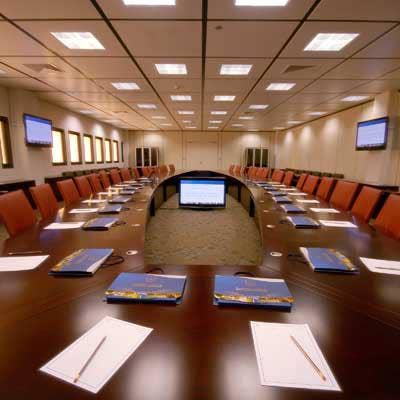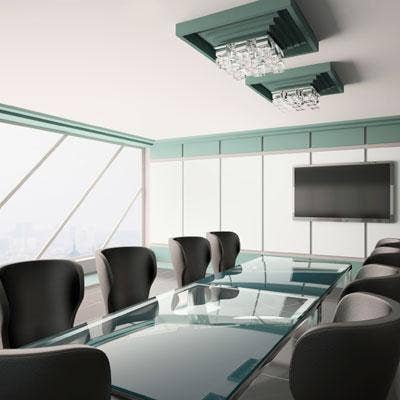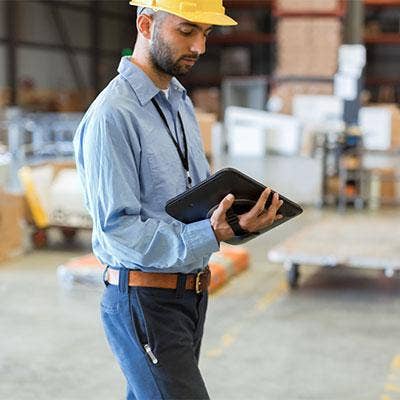HPE Aruba Vertical Marketing Chief Alan Ni On Why Corporate Real Estate Is A Gold Mine For Network Monitoring, Analytics

Breaking Down The IT Barrier
HPE Aruba sees a broad market opportunity for its machine-learning-based NetInsight network performance and analytics offering, but it is zeroing in on corporate real estate, where landlords and tenants alike have begun to pivot toward greener, more efficient and user-friendly spaces.
"There's a big focus on both new and existing buildings to make them a lot greener," said Alan Ni, HPE Aruba's vertical marketing chief. "Not only more energy-efficient, but being a good corporate citizen, more carbon-neutral, etc. They're really embracing technology, specifically the Internet of Things, in a big way to help them make those systems work more efficiently."
NetInsight, Ni said, helps IT break down barriers between itself and users including building designers, owners and users, Ni said.
The Santa Clara, Calif., company's new NetInsight offering is intended to improve the user' experience as mobility, cloud and IoT become the basis of enterprise IT strategies.
What follows is an edited excerpt of Ni's conversation with CRN.

What's changing in corporate real estate that makes a solution like NetInsight timely?
Aruba is extremely strong in the digital workplace. A lot of our technology is driven by mobility, by BYOD, by the ability to support high-performance unified communications like Skype for Business and be successful in places like high-tech, and now it's starting to hit the mainstream enterprise. Over the last year we've sensed a lot of change in the type of customer conversations we've been having. We've been having conversations with existing customers and prospects and say, 'We know you're really strong in digital workplace, what does the next-generation digital workplace look like and what are you doing about it?' There seems to be a tremendous amount of capital investment by organizations to either build new space or retrofit existing space attuned to the new demographic of workers that are coming in.

So, real estate is about more than just real estate these days?
The agenda of organizations as they build out their space, is not necessarily, 'Do I have enough space, or is this space the most efficient?' It's, 'Do I have the right space for the all the activity-based work that's happening?' There are three different stakeholder interests: Employees driven by a lot of the technology they're becoming accustomed to at home, like Alexa, or Nest cameras and smart locks. They're having that same expectation at the workplace. On the real estate side, they're actually starting to invest here. You're seeing investments into making the physical work environment more tailored to the inhabitants of it, anything from connected desks, to lighting to HVAC to windows, you name it. Anything in the building itself is quickly becoming connected through IoT and there's a demand to make it more personalized.

So, businesses don't necessarily want to take a look at empty office space -- they want to know that it's 'smart?'
They want to make sure the space they're building out is being utilized, and utilized effectively by the end users. The way they do so is to make the space more inviting. A lot of these touches may sound like they're nice-to-haves, but they're really essential to making that space a lot more productive.

Is there a r ecruitment and retention factor at play here for businesses, too?
Execs want to attract the best employees. They want to maintain productivity. They want to increase engagement. It's all about workplace technology and how do we advance it from where we're at. How do we make audio-visual systems in conference rooms easier to use? In these more open office spaces, how do we make it easier for you to go from a focal space, to a teaming space, to a conference space, to a cafeteria and not have to spend a lot of time setting up stuff. This is really making the workplace integrate better with the building sensors themselves to construct new experiences, and we're working with partners to take that to the next level.

Why is commercial real estate such an important opportunity for HPE Aruba?
On the real estate side, there's a big focus on both new and existing buildings to make them a lot greener. Not only more energy-efficient, but being a good corporate citizen, more carbon-neutral, etc. They're really embracing technology, specifically IoT, in a big way to help them make those systems work more efficiently. Historically and even today they run those systems completely parallel to IT. Maybe sometimes there's an unwillingness to work together, etc. We've looked at some data that says 20 [billion] to 30 billion IoT devices are expected by the turn of the decade. About half of that is actually going to be associated with smart building, and if you break that down even further, a quarter of it is in your consumer homes. A third of it is expected to go into commercial office space. The need to provide secure connectivity for these devices is going to be greater than ever, and that opens an opportunity for us and our partners as we push this dialogue.

Is the biggest opportunity for solution providers working with both sides of the real estate equation -- landlords and tenants?
That's exactly why we're going where we're going. In the past, you only had to convince IT. As you get into more of these complex projects, it's really split between real estate and IT. They're joint stakeholders. They both have budget authority. If you're only telling an IT story to an IT audience, it might not get you over the hump. You have to look at it collectively.

What do you mean by looking at it collectively?
Up until now, form and function were in their own silos. Real estate did the form, and IT did the function. IT didn't even get involved until the space was fully furnished and built out. In the new environment, we want to create not just a digital workplace, not a smart building, it's really a mashup of both, a smart digital workplace. We want to make it efficient. We want to make it secure, but we also want to make it experiential. We really need to bridge the aisle and bring in two different worlds. We have a lot of sensors, but those sensors can't say that it's you sitting in this office, or this conference room. It only says there is a person in that space. There's a lot of user location and context that we have on the network side that is of a lot of interest.

Businesses and real estate firms want to know exactly what's happening in their properties?
Lighting, desks, chairs, all sorts of AV components are increasingly getting connected. The building guys never really had building connectivity outside of the mechanical spaces for systems. All these new building endpoints need to be connected and they need to be connected securely. We've always been providing those connections to laptops and smartphones, etc., so it's kind of a match made in heaven.

How ready is the real estate space for solutions like NetInsight?
These real estate guys are so early in the process. They are in the design and construction phase of the project. As you think about this much more joint experience, you need to combine the two together. We need to make them understand the capabilities of the network, of the technology and that in turn will impact the type of spaces they're building. We've talked over the past year or two with many architects and they're just unaware of how advanced mobility has gotten. They're still designing spaces with the prerequisite that you have to have Ethernet in mind. Frankly, they hate that because it locks them in from a design perspective in terms of what they can do. A lot of the partnerships are going to help us advance that thought leadership.

How do your partnerships with CBRE and others help advance that agenda?
It's not just interoperability, it includes thought leadership and best practices. Teaming up with global real estate firms, like CBRE, the largest commercial real estate firm in the world; we're the first technology vendor they've aligned with; Deloitte, working with their real estate arm; Hermann Miller, the first furniture maker to introduce a line of connected desks.

How is your channel program changing to take these developments into account, and what do you need from partners in order to be successful?
It's early days here. Initially, how it's going to benefit partners is we're seeing more and more deals where we go in with our partners and do a digital workplace deal and real estate is a party to the decision. While the channel partner may not be directly interfacing with CBRE, or Hermann Miller or Deloitte, and with our collective thought leadership here, they believe in the Aruba solution and the mobile-first approach. That's where we're initially going to get the most traction. You don't just go in and upgrade a network just for the sake of upgrading the network. It's to support next-generation services and technologies. It's not just about connecting Ethernet to servers, it's about powering next-generation IoT endpoints and experiences so we can prove what we're doing.